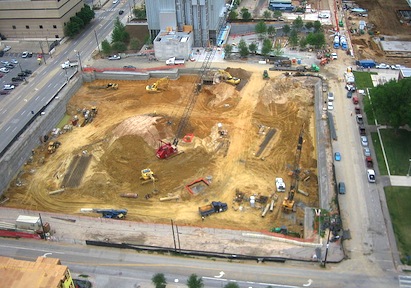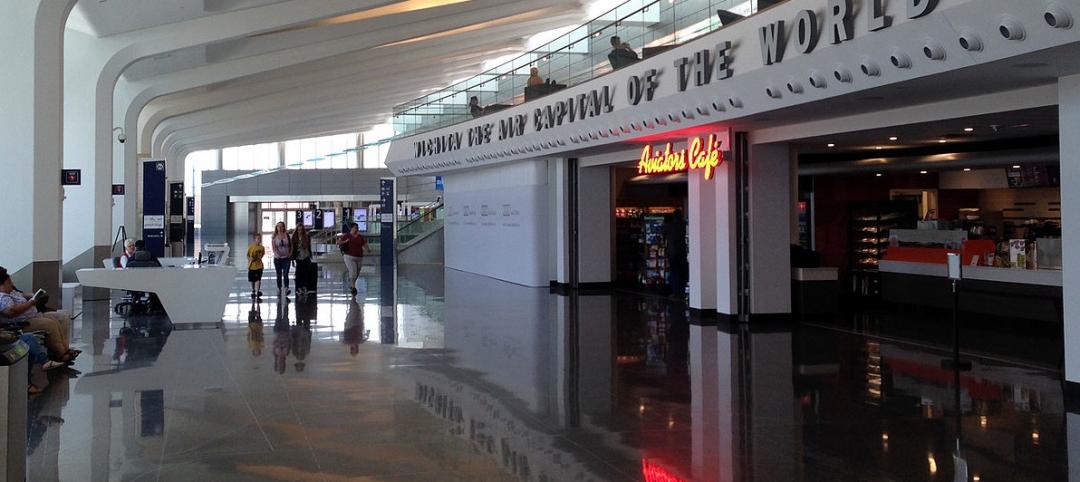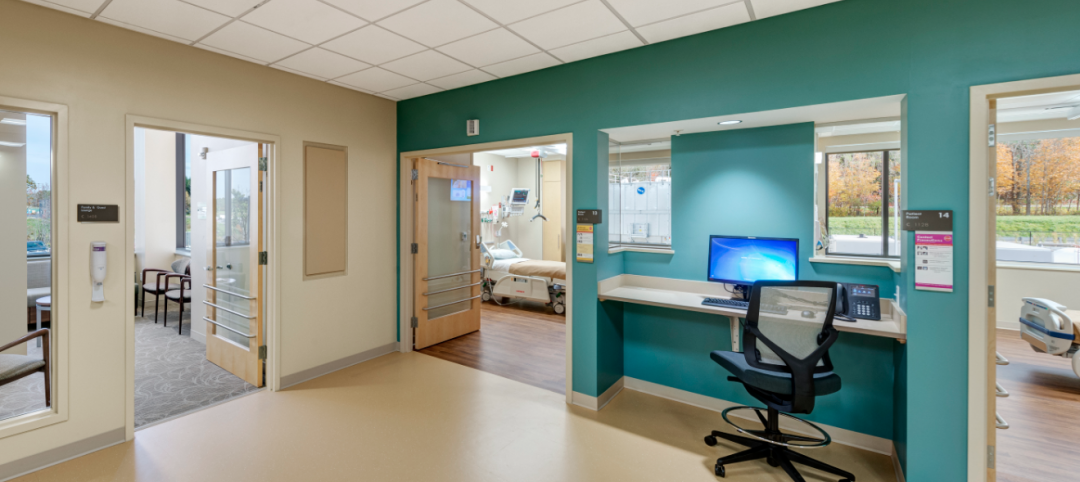The commercial real estate development industry grew at the strongest pace since the economic recovery began in 2011, according to an annual report on the state of the industry released today by the NAIOP Research Foundation.
The report, entitled “The Economic Impacts of Commercial Real Estate,” determined that the economic impact realized by the development process rose a significant 24.06% over the previous year, the largest gain since the market began to recover in 2011.
Direct expenditures for 2013 totaled $124 billion, up from $100 billion the year before, and resulted in the following economic contributions to the U.S. economy:
- Total contribution to U.S. GDP reached $376.35 billion, up from $303.36 billion in 2012;
- Personal earnings (or wages and salaries paid) totaled $120.02 billion, up from $96.75 billion in 2012; and
- Jobs supported (a measure of both new and existing jobs) reached 2.81 million in 2013, up from 2.27 million the year before.
The report says that the outlook for the remainder of 2014 and into 2015 is that the figures will continue to rise, with year-over-year growth expected in the range of 8-15%.
Commercial real estate development has an immense ripple effect in the economy, providing wages and jobs that quickly roll over into increased consumer spending.
“Commercial development’s economic impact is tremendous; simply put, a healthy development industry is critical to a prosperous U.S. economy,” said Thomas J. Bisacquino, NAIOP president and CEO. “As the uneven pace of the nation's economic recovery continues, the industry seeks public policy certainty that bolsters investors’ and developers’ confidence. Despite this lack of assurance, we see positive indicators of a rebounding industry, but believe the industry could be more robust.”
Industrial, Warehousing, Office and Retail Show Strong Gains:
- Industrial development posted a year-over-year gain of 48.5 percent due mainly to groundbreaking of energy-processing facilities.
- Warehouse construction registered a third strong year of increased expenditures in 2013, gaining 38.1 percent in 2013. This is on top of 2012 growth of 28.4 percent and 2011 growth of 17.8 percent, showing a sustained increase in demand for warehousing space.
- Office construction expenditures rose for a second year in 2013, up 23.3 percent from 2012.
- Retail construction expenditures rose modestly for a third year in 2013, up 4.8 percent from 2012.
Operations and Maintenance Surge Even As Building Owners Cut Costs With Energy Efficiencies and New Technologies
Through increased energy efficiency and advanced technology, building owners cut the average per-square-foot cost of operating building space in the U.S. by 14 cents, from $3.20/square foot to $3.06/square foot. Still, maintaining and operating the existing 43.9 billion square feet of commercial real estate space resulted in $134.3 billion of direct expenditures, and resulted in the following economic contributions to the U.S economy:
- Total contribution to GDP in 2013 $370.9 billion;
- Personal earnings (wages and salaries) totaled $116.8 billion; and
- Jobs supported, 2.9 million.
Top 10 States by Construction Value for Office, Industrial, Warehouse and Retail:
1. Texas
2. Louisiana
3. New York
4. California
5. Iowa
6. Florida
7. Maryland
8. Georgia
9. West Virginia
10. Oregon
Four new states joined the list: Louisiana, Maryland, West Virginia, and Georgia. These states made the top ten list due predominantly to development of highly specialized and expensive energy-related processing facilities. Illinois, Ohio, Massachusetts, and North Carolina dropped off the top 10 list, slipping to Nos. 11, 14, 15 and 18 respectively.
The report includes detailed data on commercial real estate development activity in all 50 states, and also ranks the top 10 states specifically according to office, industrial, warehouse and retail categories.
The report is authored by Dr. Stephen S. Fuller, director of the Center for Regional Analysis at George Mason University, and funded by the NAIOP Research Foundation.
An executive summary and the full report is online: www.naiop.org/
Related Stories
High-rise Construction | Sep 3, 2015
Rafael Viñoly's 'Walkie-Talkie' tower named U.K.'s worst new building
The curved, glass tower at 20 Fenchurch Street in London has been known to reflect intense heat onto the streets below (in one instance damaging a car) and cause severe wind gusts.
Airports | Aug 31, 2015
Surveys gauge users’ satisfaction with airports
Several surveys gauge passenger satisfaction with airports, as flyers and airlines weigh in on technology, security, and renovations.
Airports | Aug 31, 2015
Small and regional airports in a dogfight for survival
Small and regional airports are in a dogfight for survival. Airlines have either cut routes to non-hub markets, or don’t provide enough seating capacity to meet demand.
Airports | Aug 31, 2015
Airports expand rental car facilities to ease vehicular traffic at their terminals
AEC teams have found fertile ground in building or expanding consolidated rental car facilities, which are the No. 1 profit centers for most airports.
Airports | Aug 31, 2015
Experts discuss how airports can manage growth
In February 2015, engineering giant Arup conducted a “salon” in San Francisco on the future of aviation. This report provides an insight into their key findings.
Healthcare Facilities | Aug 28, 2015
Hospital construction/renovation guidelines promote sound control
The newly revised guidelines from the Facilities Guidelines Institute touch on six factors that affect a hospital’s soundscape.
Healthcare Facilities | Aug 28, 2015
7 (more) steps toward a quieter hospital
Every hospital has its own “culture” of loudness and quiet. Jacobs’ Chris Kay offers steps to a therapeutic auditory environment.
Healthcare Facilities | Aug 28, 2015
Shhh!!! 6 ways to keep the noise down in new and existing hospitals
There’s a ‘decibel war’ going on in the nation’s hospitals. Progressive Building Teams are leading the charge to give patients quieter healing environments.
Architects | Aug 28, 2015
How to transition leadership within your architecture firm, Part 2
Close to retiring? Without a plan for leadership transition, you might not foster candidates who will be capable of taking over the reins, says Whitehorn Financial's Steve Whitehorn.
Retail Centers | Aug 27, 2015
Vallco Shopping Mall renovation plans include 'largest green roof in the world'
The new owners of the mall in Cupertino, Calif., intend to transform the outdated shopping mall into a multi-purpose complex, topped by a 30-acre park.
















